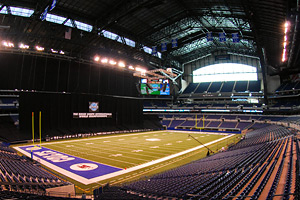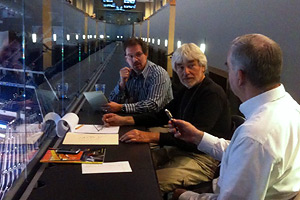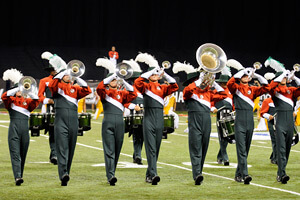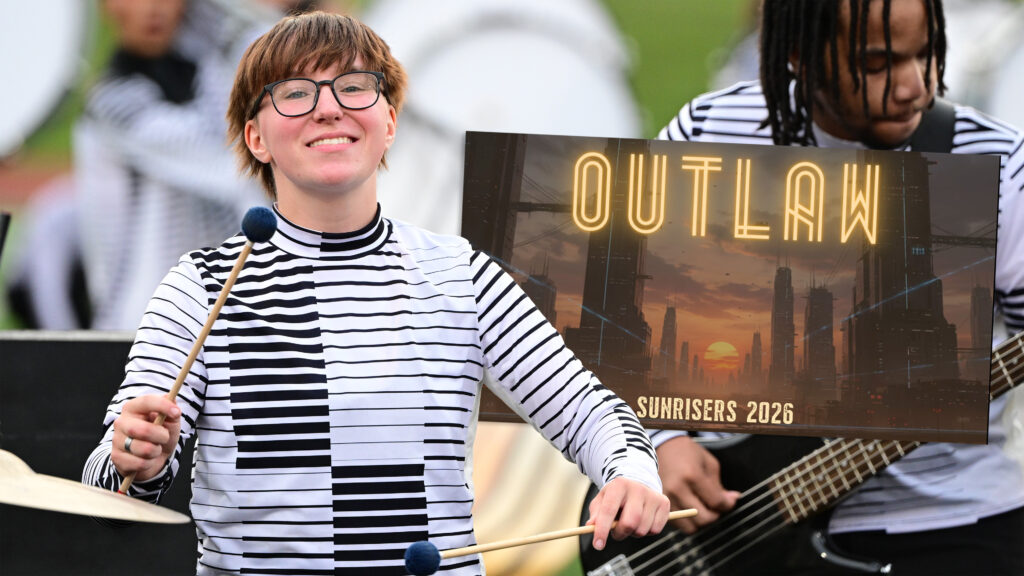
The 2009 DCI World Championship Finals—the first held at Lucas Oil Stadium (LOS)—was unquestionably a learning experience for all involved. And with Drum Corps International scheduled to keep the event at the Indianapolis venue until 2018, there’s room (and time) to grow across a number of key areas, not the least of which is making adjustments to the stadium’s sound characteristics.
As DCI moves forward in its effort—an undertaking that the organization has called “a top priority for everyone”—it’s worth noting that the organization is consulting recognized experts in the field of audio engineering. Even better, some of these experts, DCI Hall of Famers and veterans among them—bring to the table a specific understanding of the unique sonic aspects of world-class drum corps competition.
Count drum corps icon Frank Dorritie as one of those experts. Dorritie, a 2004 World Drum Corps Hall of Fame inductee who has earned two Grammy awards and nine nominations for excellence in audio engineering, emphasizes that no venue is “perfect” acoustically, not even La Scala, the legendary opera house in Milan, Italy, or New York City’s famed Carnegie Hall.
“Certainly a structure built essentially for sports [such as Lucas Oil Stadium] will have sonic anomalies, and some seating locations will be better than others,” Dorritie explains. “Still, Lucas Oil Stadium can serve as well as any other similar house for musical events.”

Dorritie, who has arranged for and instructed the likes of the Blue Devils, Santa Clara Vanguard and the Cadets, is a pioneer in the arena of capturing indoor drum corps sound. In 1980 he was the producer of “State of the Art,” the first multi-track drum corps recording.
He notes that Lucas Oil Stadium is not a dome, “but more like an airplane hangar with extremely tall sides with highly reflective characteristics.” These characteristics, he says, could be mitigated—to some degree, at least—by hanging layers of appropriate fabric in strategic places.
Opening the roof might also help slightly, Dorritie says, while adding that doing so could present other logistical problems.
“No one can tell you what the overall sound will be like in LOS with an open roof until you actually put some groups in there and play,” he cautions. “My guess is, it won’t make much overall difference for corps audiences except those who are sitting closest to the ceiling, and even then it may just introduce other negative issues. Besides, it’s an academic question, in my opinion. The roof will remain closed due to potential weather issues. The task is to maximize the size of the acoustic sweet spot inside the venue, with the roof closed. More detail than this will have to wait until there are some real-time experiments.”
Dorritie, who has worked with artists like Wynton Marsalis, Maynard Ferguson and Billy Cobham, feels that plenty can be done to optimize sound with the roof closed. “Levels and EQ for amplified sound need to be optimized for Lucas Oil Stadium, as in any professional concert situation.”

One possible strategy for the future, Dorritie suggests (via a history lesson), is for each corps to find a way to work with, and not against, the sound characteristics of Lucas Oil Stadium.
“In Medieval Europe, liturgical music composers took great advantage of large enclosed spaces in cathedrals by scoring appropriately,” Dorritie explains. “The drum corps that did so this past year—Santa Clara Vanguard, in particular—sounded quite spectacular in Lucas Oil Stadium.”
Dorritie continues: “Beyond this, there are clear advantages on the visual side to an enclosed space, without wind and other pesky elements like rain or sun glare. Color guards enjoy ideal performance conditions.”
–Jim Dunlap, Drum Corps International Magazine





